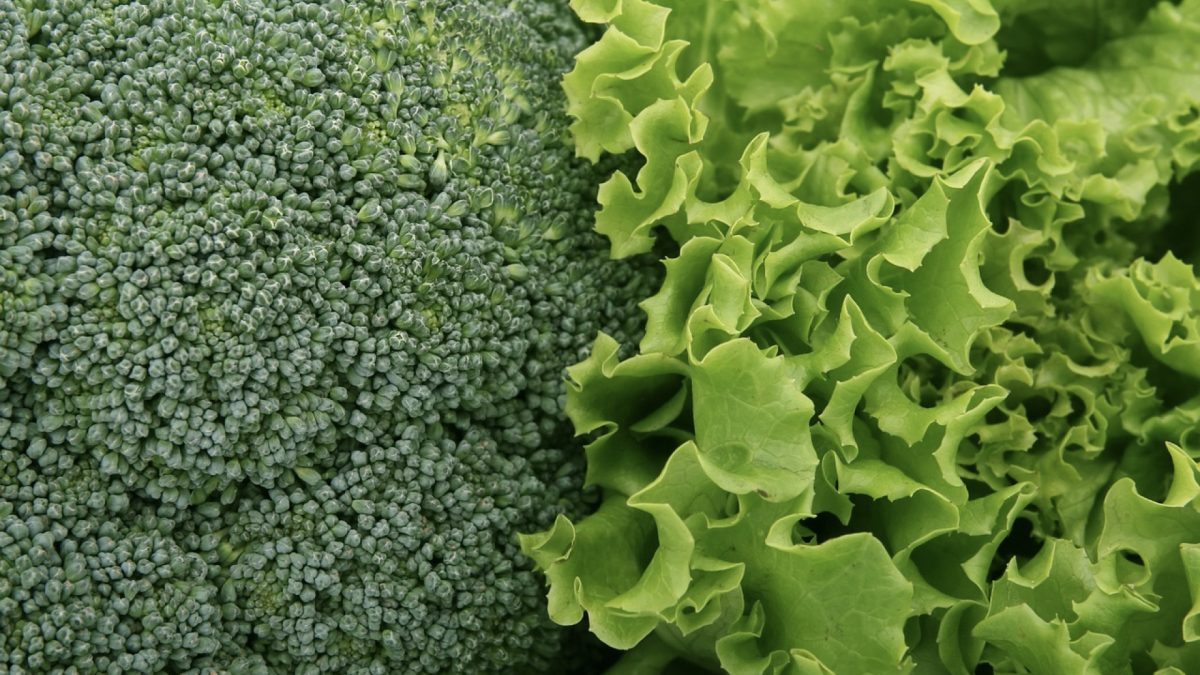Fecal Fluorescence on Meat
Chlorophyll is the green pigment that makes green leaves green. If you search for chlorophyll in the medical literature, a lot of what you find is about fecal fluorescence, a way to detect the contamination of carcasses in the slaughterhouse with feces to reduce the risk of food poisoning from pathogens harbored within animal feces. Fecal matter gets on meat either “with knife entry through the hide into the carcass, and also splash back and aerosol [airborne] deposition of fecal matter during hide removal”—that is, when they’re peeling off the skin. If, however, the animals have been eating grass, you can pick up the poo with a black light. As you can see in my video How to Regenerate Coenzyme Q10 (CoQ10) Naturally, a solution of chlorophyll is green, but, under a UV light, it lights up as red. So, if you have a black light in a chicken slaughter plant, you can get a drop on the droppings. The problem is most chickens aren’t outside anymore. They’re no longer pecking at grass so there’s less fecal fluorescence. We could let them run around outside or we could save money by just adding a chlorophyll supplement to their feed so we can better “identify areas of gut-spill contamination” on the meat.
Chlorophyll: An Anti-Inflammatory
The reason I was looking up chlorophyll was to follow-up on the data I presented in my Eating Green to Prevent Cancer video, which suggests that chlorophyll may be able to block carcinogens. I found a few in vitro studies on the potential anti-inflammatory effects of chlorophyll. After all, green leaves have long been used to treat inflammation, so anti-inflammatory properties of chlorophyll and their break-down products after digestion were put to the test. And, indeed, they may represent “valuable and abundantly available anti-inflammatory agents.” Maybe that’s one reason why cruciferous vegetables, like kale and collard greens, are associated with decreased markers of inflammation.
In a petri dish, for example, if you lay down a layer of arterial lining cells, more inflammatory immune cells stick to them after you stimulate them with a toxic substance. We can bring down that inflammation with the anti-inflammatory drug aspirin or, even more so, by just dripping on some chlorophyll. Perhaps that’s one of the reasons kale consumers appear to live longer lives.
Producing Our Own Chlorophyll
As interesting as I found that study to be, this next study blew my mind. The most abundant energy source on this planet is sunlight. However, only plants are able to use it directly—or so we thought. After eating plants, animals have chlorophyll in them, too, so might we also be able to derive energy directly from sunlight? Well, first of all, light can’t get through our skin, right? Wrong. This was demonstrated by century-old science—and every kid who’s ever shined a flashlight through her or his fingers, showing that the red wavelengths do get through. In fact, if you step outside on a sunny day, there’s enough light penetrating your skull and going through to your brain that you could read a book in there. Okay, so our internal organs are bathed in sunlight, and when we eat green leafy vegetables, the absorbed chlorophyll in our body does actually appear to produce cellular energy. But, unless we eat so many greens we turn green ourselves, the energy produced is probably negligible.
However, light-activated chlorophyll inside our body may help regenerate Coenzyme Q10. CoQ10 is an antioxidant our body basically makes from scratch using the same enzyme we use to make cholesterol—that is, the same enzyme that’s blocked by cholesterol-lowering statin drugs. So, if CoQ10 production gets caught in the crossfire, then maybe that explains why statins increase our risk of diabetes—namely, by accidently also reducing CoQ10 levels in a friendly-fire type of event. Maybe that’s why statins can lead to muscle breakdown. Given that, should statin users take CoQ10 supplements? No, they should sufficiently improve their diets to stop taking drugs that muck with their biochemistry! By doing so—by eating more plant-based chlorophyll-rich diets—you may best maintain your levels of active CoQ10, also known as ubiquinol. “However, when ubiquinol is used as an antioxidant, it is oxidized to ubiquinone. To act as an effective antioxidant, the body must regenerate ubiquinol from ubiquinone,” perhaps by using dietary chlorophyll metabolites and light.
Researchers exposed some ubiquinone and chlorophyll metabolites to the kind of light that makes it into our bloodstream. Poof! CoQ10 was reborn. But, without the chlorophyll or the light, nothing happened. By going outside we get light and, if we’re eating our veggies, chlorophyll, so maybe that’s how we maintain such high levels of CoQ10 in our bloodstream. Perhaps this explains why dark green leafy vegetables are so good for us. We know sun exposure can be good for us and that eating greens can be good for us. “These benefits are commonly attributed to an increase in vitamin D from sunlight exposure and consumption of antioxidants from green vegetables”—but is it possible that these explanations might be incomplete?
This blog post has it all: a mind-blowing mechanism, practical applicability, and poop. What more could you want?
Interested in learning more about the potential downsides of cholesterol-lowering statin drugs? I’ve produced other videos on the topic, including Statin Cholesterol Drugs and Invasive Breast Cancer and The Actual Benefit of Diet vs. Drugs.
In health,
Michael Greger, M.D.
PS: If you haven’t yet, you can subscribe to my free videos here and watch my live, year-in-review presentations:
- 2012: Uprooting the Leading Causes of Death
- 2013: More Than an Apple a Day
- 2014: From Table to Able: Combating Disabling Diseases with Food
- 2015: Food as Medicine: Preventing and Treating the Most Dreaded Diseases with Diet
- 2016: How Not To Die: The Role of Diet in Preventing, Arresting, and Reversing Our Top 15 Killers
